Les cinquante dernières années ont vu la victoire anti-culturelle, amorale et politicarde du courant initié dès le début des années 1960, puis, plus encore, par cette fumisterie que l’on nomme Mai 68. La civilisation française a progressivement perdu toute colonne vertébrale. A gauche comme à droite, la langue française est massacrée tous les jours par la caste politico-médiatique confortablement installée. L’individualisme prime sur les valeurs et sur le bon sens. Le concept de République est aujourd’hui vide et creux. La laïcité est devenue allahïcité. La culture classique -- à la fois judéo-chrétienne et gréco-latine -- est interdite de séjour sur son propre territoire.
L’immigration-invasion est majoritairement musulmane, pour ne pas dire islamique. L’islamo-gauchisme, c’est très « tendance » ; et oser écrire, cela est très incorrect. Une personne ouvertement de droite est aussitôt qualifiée « d’extrémiste de droite », de « frontiste » ou de « lepéniste ». Le travail des idées a été remplacé par de pseudo-débats aussi médiocres que sectaires. Dans cette ambiance, la société civile aura bientôt le choix entre le chaos, la désobéissance ou la prise du pouvoir.
Parler la langue de Mitterrand comme une lourde vache batave
Le chroniqueur catholique de droite Bernard Antony a récemment écrit (extraits adaptés ; voir lien vers source en bas de page) : Je suis resté hier devant mon poste un peu plus longtemps que d’ordinaire, je me suis promené dans les chaînes : à deux ou trois reprises, çà et là, l’indigent spectacle de François Hollande proférant d’ineptes assertions sur le bombardement du camp d’entraînement à Deir ez-Zor pour les jihadistes qui, paraît-il, ont besoin d’aller là-bas, si loin, pour apprendre à tirer à la kalach, à dégoupiller une grenade ou à placer une charge. Toutes choses pourtant que n’importe quel caïd de Marseille se ferait une joie de leur enseigner juste pour le plaisir du service rendu.
Bernard Antony : Mais le pire, ce n’est pas qu’il prend les Français pour des billes, c’est qu’il parle la langue de Mitterrand comme une lourde vache batave avec des mots impropres, des pronoms relatifs inappropriés, et des accords du participe massacrés. Cela ne manque pas de provoquer les quolibets des orateurs africains qui tous, je l’ai vérifié jadis dans les rencontres du Parlement Européen, se font un point d’honneur de s’exprimer parfaitement dans la langue de Bossuet, conclut Bernard Antony (fin des extraits adaptés ; voir lien vers source en bas de page).
Refaire des tissus, refaire des paysans, des esprits indépendants
Dans son dernier livre, Philippe de Villiers écrit (extraits ; voir lien vers source en bas de page) : Un jour, on retrouvera les étymologies : la patrie, la terre des pères, renvoie à la paternité. La nation – natio : naissance – renvoie à la maternité. On a voulu fabriquer une société de frères sans père ni mère. Il faudra bien reconnaître, face à la guerre contre la famille et contre la famille des familles – la communauté nationale –, l’objection de conscience, le refus de l’impôt quand on ne voudra plus payer de sa vie la mort des autres. Les premiers objecteurs iront en prison. Puis les murs de la prison tomberont, on ne peut pas emprisonner tout un peuple.
Philippe de Villiers : Car ceux qui luttent contre la vie et brisent les attachements vitaux ont choisi de ne pas survivre. Ils feront place nette. Ils n’auront pas de successeurs. Les derniers survivants seront les enfants des cercles de survie, les évadés de l’ordre marchand. Heureusement, dans un vieux pays, rien n’est irréversible. Il y a comme une mémoire quasi minérale du sol natal : le déracinement déracine tout, sauf le besoin d’enracinement. Nos âmes expirantes retrouveront un jour les sagesses instinctives. Il faudra refaire des tissus, refaire des paysans, des esprits indépendants, comme on replante des fleurs après l’hiver, conclut Philippe de Villiers (fin des extraits ; voir lien vers source en bas de page).
Une succession de trahisons et de reniements
De son côté, l’analyste Alexandre Latsa écrit (extraits ; voir lien vers source en bas de page) : Le 18 septembre dernier, un évènement assez inattendu s’est produit sur le plateau de l’émission "On n’est pas couché" (ndmg - il ne s’agit pas ici de la prestation récente de Nadine Morano). Pour la première fois sans doute depuis que le tandem de débat qui anime les discussions avec les invités existe, ces derniers ont été remis à leur place par un authentique intellectuel dont on ne peut que saluer l'honnêteté et la rigueur intellectuelle qui a été la sienne au cours de cet échange et qui, il faut bien le dire, aura laissé le binôme totalement KO, comme on peut le voir ici et là.
Alexandre Latsa : Cet échange sur le plateau d'une émission du service public aura permis une nouvelle fois de constater le fossé qui existe au sein de tendances politiques pourtant plutôt similaires au sens large, entre les exécutants du système médiatique et le dernier noyau d'authentiques intellectuels français dont sans aucune hésitation, Michel Onfray fait partie tout comme par exemple Éric Zemmour. L'air totalement sonné, hagard même diront certains, de Léa Salamé ou Yann Moix sur le plateau le 18 septembre, ne peut pas ne pas nous rappeler la puissance lourde des démonstrations zemmouriennes qui mainte fois laissèrent les invités KO. Des états de fait traduisant l'écart cosmique de niveau entre Michel et Éric, et ceux qui sont censés analyser et évaluer leurs réflexions et leur production intellectuelle.

Alexandre Latsa : De gauche et de droite, Michel et Éric sont pourtant équipés d'un logiciel de fonctionnement commun, logiciel les rapprochant sans doute en réalité beaucoup plus que ne les éloignent leurs pourtant réelles différences d'orientation politique.
Alexandre Latsa : Parmi ces points communs de fond et de forme on peut citer :
Une authentique maîtrise du verbe.
Une rhétorique axée sur la stratégie de vérité et l'analyse des faits.
Une pensée authentiquement cartésienne et donc française.
Une conscience nationale et/ou populaire affirmée.
La profonde remise en question des élites politiques ou médiatiques.
Le refus de cette insupportable menace permanente d'assimilation au Front national.
La tentative de compréhension des éléments visiblement sur une longue durée historique.
Et enfin, la tentative de résister à cette nouvelle dictature qu'est devenue l'information de l'instantané, qui favorise l'émotion au détriment de la réflexion.
Alexandre Latsa : A gauche, cette rupture est plus visible qu'à droite tant les 30 dernières années ont vu la totale victoire culturelle, morale et politique de la culture initiée par mai 68, une prise de pouvoir qui s'est affirmée au cours des années 1980. Une nouvelle gauche née sur les cendres du parti communiste et qui au cours des décennies suivantes s'est transformée en une nébuleuse sociale-démocrate sans idéologie et dont les principaux représentants n'ont plus que pour compétence leur aptitude à subsister au sein de la grande kermesse médiatique, cet espace oligarchique transnational au sein duquel, fondamentalement, le peuple n'existe pas, pas plus du reste que n'y existe la nation française.
Alexandre Latsa : A ce titre et pour se convaincre de la dépendance des premiers envers les seconds, une lecture attentive des excellents dossiers de l'Observatoire des Journalistes et de l'information permet de mieux comprendre ces nouvelles interactions. Les dynamiques qui ont pris naissance en amont de mai 68 et ont abouti à ce Maïdan français avaient pour corolaire historique naturel d'entraîner la disparition totale de l'ancienne gauche, que l'on peut qualifier de plutôt nationale, populaire et cohérente. Une disparition rendue nécessaire pour permettre la prise de pouvoir de cette Nouvelle Gauche qui, sous couvert d'aspirations sociétales fort séduisantes et d'une soi-disant sacro-sainte liberté individuelle, avait surtout pour raison et finalité historique de s'accorder avec l'hyper économisme dominateur et transnational.
Alexandre Latsa : L'histoire politique de notre pays de 1981 à 2015 n'aura finalement été qu'une succession de trahisons et de reniements opérés par les enfants de mai 68, ces libertaires capitalistes qui ont soutenu les processus économiques destructeurs (pour le petit peuple) et parfois antidémocratiques de la construction européenne, que l'on pense respectivement à l'instauration de l'espace Schengen en 1995 ou au référendum de 2005 sur la Constitution européenne. Nul doute que pour cette caste, l'entrée en vigueur du traité transatlantique soutenu par tous les socialistes européens sera vraisemblablement un soulagement mais aussi et surtout, au fond, un aboutissement.
Alexandre Latsa : De nombreux points communs avec notre classe politique, qui a au cours des quatre dernières décennies évolué de telle façon que notre président est devenu une sorte de VRP, et notre Assemblée nationale, chambre d'enregistrement des décisions américaines. Un comble alors que la France, en tant qu'Etat indépendant, devrait avoir à sa tête un président qui ne pense qu'aux intérêts supérieurs de la nation et une Assemblée qui valide les grandes directions insufflées par le chef de l'Etat.
Alexandre Latsa : Pourtant, ici et là, de nouvelles dynamiques apparaissent. Les Français sont visiblement de plus en plus nombreux à mesurer l'incompétence de leur classe politique et à comprendre que la solution ne viendra pas d'en haut mais d'en bas, du peuple. Nombreux sont ceux qui envisagent désormais de nouvelles figures politiques issues pourquoi pas de la société civile. De tels scénarios ont du reste déjà été envisagés, que ce soit avec Michel Onfray et Éric Zemmour. L'avenir pourrait-il voir l'émergence d'un gouvernement d'union nationale issu de la société civile ?, conclut Alexandre Latsa (fin des extraits ; voir lien vers source en bas de page).
Michel Garroté
http://www.bernard-antony.com/2015/09/devant-mon-poste.html
http://fr.sputniknews.com/points_de_vue/20150928/1018441210.html#ixzz3n8iJtIzf





 del.icio.us
del.icio.us
 Digg
Digg Alzi la mano che non rida quando, il primo della classe, magari quel ‘secchione’ con gli occhiali che non perde occasione nel dimostrare la propria bravura e la contestuale impreparazione altrui, viene beccato con le mani nel sacco. In tutte le classi di tutto il mondo, quando magari un soggetto del genere viene colto impreparato è una festa per tutti e chi da mesi ha una sfilza di impreparati, improvvisamente torna entusiasta di andare a scuola. Si può quindi comprendere come mai molti italiani, alla notizia del ‘trucchetto’ della Volkswagen, hanno iniziato a ridacchiare ed a sfoderare tutta la retorica da sindrome di ultimo della classe: ‘Anche loro barano’, ‘adesso la Germania non può più dirci nulla’ oppure ancora ‘Germania Kaputt’, sono state le frasi più in voga sui social network in questi giorni. Va bene ridacchiare per le disgrazie di un paese che da anni bacchetta mezza Europa al grido di ‘austerity e rigore’, ma al tempo stesso è ben utile chiarire come in realtà la situazione non è così semplice come una banale querelle tra compagni di classe. In realtà, sulla disgrazia Volkswagen c’è ben poco da ridere e per due ragioni; in primo luogo, è da stolti oggi sfoderare retorica germanofoba.
Alzi la mano che non rida quando, il primo della classe, magari quel ‘secchione’ con gli occhiali che non perde occasione nel dimostrare la propria bravura e la contestuale impreparazione altrui, viene beccato con le mani nel sacco. In tutte le classi di tutto il mondo, quando magari un soggetto del genere viene colto impreparato è una festa per tutti e chi da mesi ha una sfilza di impreparati, improvvisamente torna entusiasta di andare a scuola. Si può quindi comprendere come mai molti italiani, alla notizia del ‘trucchetto’ della Volkswagen, hanno iniziato a ridacchiare ed a sfoderare tutta la retorica da sindrome di ultimo della classe: ‘Anche loro barano’, ‘adesso la Germania non può più dirci nulla’ oppure ancora ‘Germania Kaputt’, sono state le frasi più in voga sui social network in questi giorni. Va bene ridacchiare per le disgrazie di un paese che da anni bacchetta mezza Europa al grido di ‘austerity e rigore’, ma al tempo stesso è ben utile chiarire come in realtà la situazione non è così semplice come una banale querelle tra compagni di classe. In realtà, sulla disgrazia Volkswagen c’è ben poco da ridere e per due ragioni; in primo luogo, è da stolti oggi sfoderare retorica germanofoba. In poche parole, la Germania era pronta a fare la sua parte; una parte che, seppur invisa a molte cancelliere europee, le spetta di diritto essendo l’economia più forte del continente ed il paese più popolato d’Europa. La politica estera tedesca presenta molte lacune e molte criticità, ma al tempo stesso ‘tifare’ per un peso minore di Berlino nello scacchiere internazionale, vuol dire tagliare fuori definitivamente il vecchio continente da ogni possibile ruolo da protagonista nelle crisi principali. Ed è inoltre proprio Berlino ad avanzare perplessità su alcuni aspetti del TTIP, che invece gli americani vorrebbero far approvare in tempi brevi; tale trattato transatlantico dovrà essere ostacolato soprattutto dal movimento di opinione che da 3 anni a questa parte si sta sviluppando in tutta Europa, ma anche una Germania che avanzava perplessità poteva certamente essere un valido baluardo di difesa. L’aver lanciato le prove del trucco Volkswagen sulle emissioni di gas comunque, non è probabilmente legato direttamente ad uno dei singoli casi prima citati; esso, visto dal luogo da cui è partito (dagli USA), è probabilmente ricollegabile ad un avvertimento generale: la Germania oltre certi limiti non può andare.
In poche parole, la Germania era pronta a fare la sua parte; una parte che, seppur invisa a molte cancelliere europee, le spetta di diritto essendo l’economia più forte del continente ed il paese più popolato d’Europa. La politica estera tedesca presenta molte lacune e molte criticità, ma al tempo stesso ‘tifare’ per un peso minore di Berlino nello scacchiere internazionale, vuol dire tagliare fuori definitivamente il vecchio continente da ogni possibile ruolo da protagonista nelle crisi principali. Ed è inoltre proprio Berlino ad avanzare perplessità su alcuni aspetti del TTIP, che invece gli americani vorrebbero far approvare in tempi brevi; tale trattato transatlantico dovrà essere ostacolato soprattutto dal movimento di opinione che da 3 anni a questa parte si sta sviluppando in tutta Europa, ma anche una Germania che avanzava perplessità poteva certamente essere un valido baluardo di difesa. L’aver lanciato le prove del trucco Volkswagen sulle emissioni di gas comunque, non è probabilmente legato direttamente ad uno dei singoli casi prima citati; esso, visto dal luogo da cui è partito (dagli USA), è probabilmente ricollegabile ad un avvertimento generale: la Germania oltre certi limiti non può andare. Une “crise de légitimité” est, à notre époque, nécessairement une crise de communication (en plus de ses composants politiques propres). La pratique statistique en politique (sondages, enquêtes) en fournit notamment mais principalement le moyen, pour le meilleur ou pour le pire, et elle exerce une influence considérable sur les psychologies. Pour cette raison, le dernier sondage Gallup aux USA représente une grave menace pour “le gouvernement des États-Unis” as a whole (toute l’organisation du gouvernement, – administration, Congrès, Cour Suprême, structure de lobbying, d’influence et de corruption, etc.). Ce sondage intervient à l’heure où la démission (effective le 30 octobre) du républicain John Boehner de sa fonction de Speaker (Président de la Chambre des Représentants et deuxième personnage dans la ligne de succession du président en cas d’indisponibilité) autant que de sa fonction de Représentant met en évidence la crise profonde du parti majoritaire (républicain), de plus en plus pressé par son aile droite populiste et anti-fédéraliste. Cela apparaît à l’heure où la politique de l’administration, intérieure et extérieure, avec les démocrates solidaires, est férocement contestée et extraordinairement inefficace...
Une “crise de légitimité” est, à notre époque, nécessairement une crise de communication (en plus de ses composants politiques propres). La pratique statistique en politique (sondages, enquêtes) en fournit notamment mais principalement le moyen, pour le meilleur ou pour le pire, et elle exerce une influence considérable sur les psychologies. Pour cette raison, le dernier sondage Gallup aux USA représente une grave menace pour “le gouvernement des États-Unis” as a whole (toute l’organisation du gouvernement, – administration, Congrès, Cour Suprême, structure de lobbying, d’influence et de corruption, etc.). Ce sondage intervient à l’heure où la démission (effective le 30 octobre) du républicain John Boehner de sa fonction de Speaker (Président de la Chambre des Représentants et deuxième personnage dans la ligne de succession du président en cas d’indisponibilité) autant que de sa fonction de Représentant met en évidence la crise profonde du parti majoritaire (républicain), de plus en plus pressé par son aile droite populiste et anti-fédéraliste. Cela apparaît à l’heure où la politique de l’administration, intérieure et extérieure, avec les démocrates solidaires, est férocement contestée et extraordinairement inefficace...





 Besides refusing to release the U.S. government’s evidence on pivotal events in these international crises, Obama has prosecuted more national security whistleblowers than all past presidents combined.
Besides refusing to release the U.S. government’s evidence on pivotal events in these international crises, Obama has prosecuted more national security whistleblowers than all past presidents combined.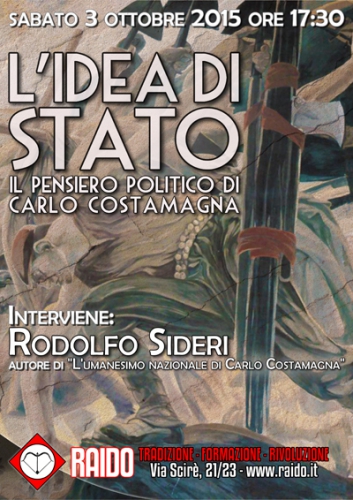




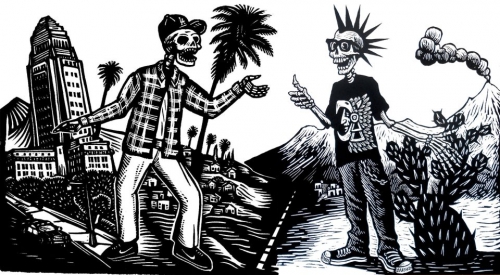


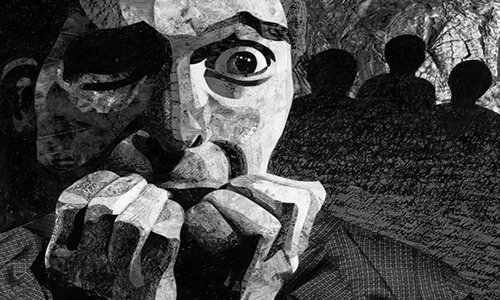


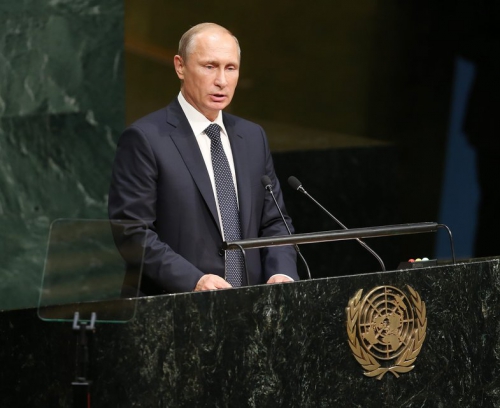


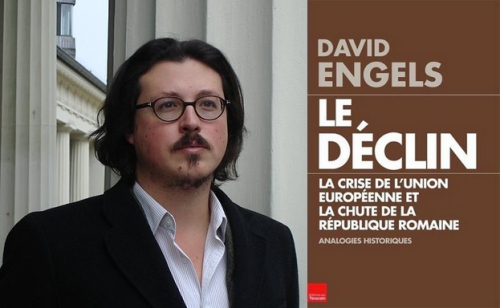
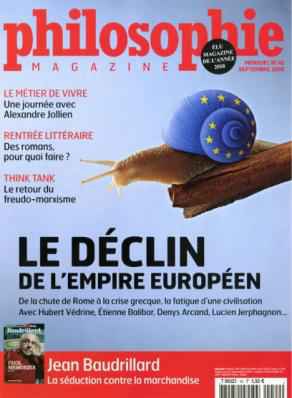 Certains intellectuels avancent l'idée que cette déconnexion découle de la fin de la guerre froide, qui les aurait contraint à penser le monde de manière pragmatique. Comment expliquer que ces élites en soient arrivées-là ?
Certains intellectuels avancent l'idée que cette déconnexion découle de la fin de la guerre froide, qui les aurait contraint à penser le monde de manière pragmatique. Comment expliquer que ces élites en soient arrivées-là ?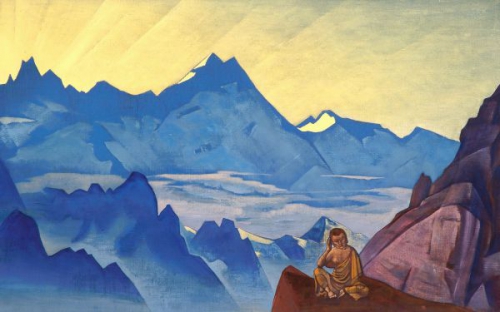

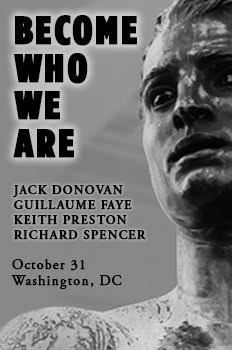

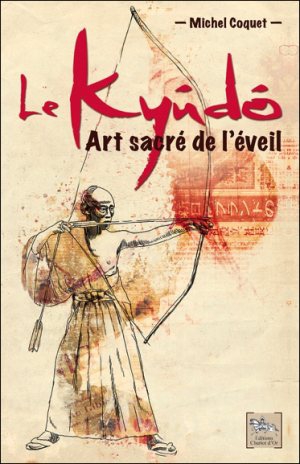 Loin du tape-à-l’oeil, Michel Coquet, né en 1944, a sincèrement voué sa vie à l’apprentissage des arts martiaux japonais (karaté, kenjutsu, ïaïdô, kyûdô, aïkidô, etc.), un apprentissage spirituel, car le budô, la voie du guerrier, ne peut être assimilée à un sport ou à une discipline olympique (tel le judô, et comme une partie de la fédération internationale de kendô le souhaiterait). Au Japon, une grande compagnie de sécurité sponsorise des lutteurs, des kendôkas, et les "matches de sumo" flairent bon le business... Actuellement le budô inclut de multiples disciplines, comme le judô, le kyudô, sumô, l’aïkidô, shôrinji kempô, naginata, jukendô : le guerrier de jadis est aujourd’hui éclaté en de multiples disciplines édulcorées. En somme, « budô » désigne les « arts martiaux » depuis l’ère Meiji (1868-1912). Avant cette date, on employait les termes de « bugei » et de « bujutsu », et même « l’ancienne voie du guerrier », ou « kobudô » est un néologisme. Bugei, ou l’ « art du guerrier » est une appellation caractéristique de la période d’Edô, où l’art militaire s’inspirait des autres domaines artistiques, comme le noh (pour les déplacements et les postures) ou la cérémonie du thé (les katas), ce qui manifestait une volonté d’esthétiser les techniques de combat.
Loin du tape-à-l’oeil, Michel Coquet, né en 1944, a sincèrement voué sa vie à l’apprentissage des arts martiaux japonais (karaté, kenjutsu, ïaïdô, kyûdô, aïkidô, etc.), un apprentissage spirituel, car le budô, la voie du guerrier, ne peut être assimilée à un sport ou à une discipline olympique (tel le judô, et comme une partie de la fédération internationale de kendô le souhaiterait). Au Japon, une grande compagnie de sécurité sponsorise des lutteurs, des kendôkas, et les "matches de sumo" flairent bon le business... Actuellement le budô inclut de multiples disciplines, comme le judô, le kyudô, sumô, l’aïkidô, shôrinji kempô, naginata, jukendô : le guerrier de jadis est aujourd’hui éclaté en de multiples disciplines édulcorées. En somme, « budô » désigne les « arts martiaux » depuis l’ère Meiji (1868-1912). Avant cette date, on employait les termes de « bugei » et de « bujutsu », et même « l’ancienne voie du guerrier », ou « kobudô » est un néologisme. Bugei, ou l’ « art du guerrier » est une appellation caractéristique de la période d’Edô, où l’art militaire s’inspirait des autres domaines artistiques, comme le noh (pour les déplacements et les postures) ou la cérémonie du thé (les katas), ce qui manifestait une volonté d’esthétiser les techniques de combat. 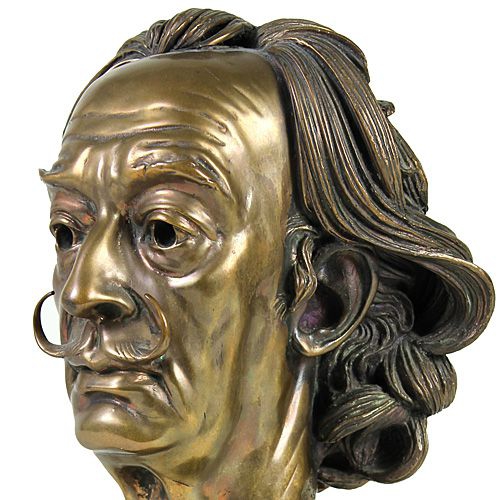



 Despite his “far-out” art and aberrant — but very public — lifestyle, Dalí, like most of the Great Artists of the 20th century, was at least temperamentally a man of the Right.[20] Thus, even if you have no interest, or an active dislike, of “modern art”[21] or weirdoes, you will likely enjoy this tour through this little-known world of post-War anti-Leftists, a sort of avant-garde version of the circles of the Windsors or Mosleys.[22]
Despite his “far-out” art and aberrant — but very public — lifestyle, Dalí, like most of the Great Artists of the 20th century, was at least temperamentally a man of the Right.[20] Thus, even if you have no interest, or an active dislike, of “modern art”[21] or weirdoes, you will likely enjoy this tour through this little-known world of post-War anti-Leftists, a sort of avant-garde version of the circles of the Windsors or Mosleys.[22]

